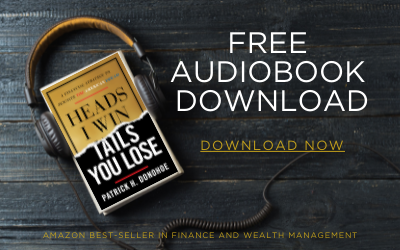True diversification is essential for long-term wealth, going beyond just holding stocks to include assets like bonds, real estate, precious metals, and insurance strategies. At Paradigm Life, our Perpetual Wealth Strategy™ spreads investments across various asset classes to reduce risk, enhance growth, and provide stability. This approach safeguards against market volatility, creates multiple income streams, and ensures steady wealth growth for a resilient financial future.
At Paradigm Life, we don’t just offer financial tools—we teach individuals how to implement The Perpetual Wealth Strategy™, a philosophy built on cash flow, control, and protection. Our approach isn’t about selling products—it’s about helping you create a strategy that serves you in every stage of life.
Key Asset Classes to Consider for True Diversification
To build a truly diversified wealth strategy, it’s not enough to spread your money across different stocks or funds. At Paradigm Life, we emphasize diversifying by asset type, risk, and control—as guided by our Hierarchy of Wealth™. Here are five key asset classes to consider:
1. Stocks: Publicly traded company shares can offer long-term growth potential. However, they are also tied to market fluctuations and carry higher risk, especially in volatile economic periods.
- Best for: Long-term capital appreciation
- Consideration: Limited control and high correlation with economic cycles
2. Bonds: Bonds are debt instruments that provide fixed interest payments. Government and corporate bonds offer greater stability than stocks, but typically lower returns.
- Best for: Steady income and lower volatility
- Consideration: Returns may be impacted by inflation and rising interest rates
3. Real estate: Property investments generate consistent income and long-term value. Whether residential or commercial, real estate offers tangible value and potential tax advantages.
- Best for: Passive income and portfolio diversification.
- Consideration: Illiquidity and market-specific risks.
4. Precious metals: Assets like gold and silver have long served as a hedge against inflation and economic uncertainty. They don’t produce income but can preserve value during market downturns.
- Best for: Inflation protection and long-term security
- Consideration: Price volatility and lack of cash flow
5. Whole life insurance (the family bank strategy): Dividend-paying whole life insurance is a powerful Tier 1 asset within the Hierarchy of Wealth™. It offers guaranteed growth, liquidity through policy loans, tax-advantaged cash value, and long-term protection.
- Best for: Financial control, legacy planning, and liquidity
- Consideration: Requires long-term commitment and proper structure
Why Diversification Is Crucial for Financial Success
A truly diversified portfolio isn’t just about avoiding risk—it’s about building wealth that lasts through all economic seasons. Here’s why diversification is essential for a strong financial foundation:
- Reduces risk: Different asset types behave differently. If one underperforms, others can help balance the outcome.
- Enhances growth potential: Diversified strategies open more paths for consistent returns—not just in bull markets, but in every phase of life.
- Hedges against market volatility: Market-linked assets can fluctuate wildly. Non-correlated assets like whole life insurance and precious metals offer resilience during downturns.
- Creates multiple income streams: With assets like real estate and the cash value of whole life insurance, you’re not relying on one source of income—you’re building financial flexibility.
A Brief History of Investment Strategies
Investment strategies have evolved over centuries, shaped by changes in economies, technologies, and the ways people understand and manage financial risk. Recognizing this evolution highlights the importance of true diversification—a principle deeply embedded in The Perpetual Wealth Strategy™. From early trade routes to sophisticated financial markets, the story of investing reveals timeless lessons in building a resilient and intentional wealth strategy.
The Origins of Investment Strategies: Early Trade and Ventures
Before stocks and bonds, people invested in commerce—literally. In 16th-century Europe, merchants pooled money to fund international trade expeditions. These ventures involved tangible goods like spices and textiles and offered early examples of risk-sharing and diversification—merchants diversified their capital by investing across various goods and regions.
As trade flourished, so did the demand for broader financial collaboration. By the late 1600s, Dutch innovators created the world’s first stock exchange, allowing investors to buy and sell ownership in trading companies. This marked the beginning of public investment and the first true financial markets.
The Birth of Modern Financial Markets: The 18th Century
The 18th century brought a formal structure to investing. In the United States, a pivotal moment came in 1790 when Treasury Secretary Alexander Hamilton introduced government bonds to help finance the Revolutionary War. These bonds became a vehicle for public investment, eventually paving the way for equity markets.
By the 1790s, the New York Stock Exchange (NYSE) was established. It became the foundation for modern corporate finance—allowing companies to raise capital through shares while providing the public with access to new investment opportunities.
The 20th Century: The Birth of Portfolio Diversification
The 20th century introduced a major shift in how investors managed risk: portfolio diversification. As markets expanded and global economies became increasingly interconnected, the idea of putting all your financial eggs in one basket began to fade.
In the 1950s, economist Harry Markowitz formalized this approach with Modern Portfolio Theory (MPT). His framework helped investors understand the importance of combining assets that react differently to market conditions, such as stocks (for growth) and bonds (for stability). This marked a turning point in wealth strategy—one that continues to influence investment advice today.
The Rise of Alternative Assets: Late 20th Century to Today
As financial systems matured, so did the recognition that market-based diversification alone isn’t enough. This led to increased interest in alternative assets—investments that provide greater control, stability, and non-correlation to traditional markets.
Here are a few examples:
- Precious metals: Gold and silver continue to serve as a hedge against inflation and currency risk. They offer protection during times of economic instability.
- Real estate: Whether residential or commercial, real estate generates income and long-term value while providing tax advantages and a measure of control.
- Whole life insurance: As a cornerstone of The Perpetual Wealth Strategy™, properly structured whole life insurance offers guaranteed growth, tax-advantaged cash value, and liquidity. It plays a central role in strategies like The Family Bank, serving as a Tier 1 asset in the Hierarchy of Wealth™. This makes it ideal for both diversification and financial resilience.
The Limitations of Stock Market Diversification
Many investors believe that diversifying within the stock market—spreading investments across various companies or sectors—is enough to manage risk. But here’s the reality: stock market diversification alone does not offer true protection against financial uncertainty. While it may reduce exposure to individual company failures, it still leaves your entire portfolio vulnerable to broader economic forces and market-wide downturns.
Why Stock Market Diversification Isn’t Enough
Let’s break down why relying only on stock market diversification can leave your wealth exposed:
- Market volatility impacts all sectors: Even if your portfolio holds a wide range of stocks—from tech and energy to healthcare and consumer goods—it’s all still connected to the same financial system. When market-wide corrections or recessions occur, most stocks tend to fall together.
- Stocks react similarly to economic conditions: Stock performance is heavily influenced by external factors like
- Inflation
- Interest rate changes
- Global trade disruptions
- Political instability
- No exposure to non-correlated asset: True risk management requires non-correlated assets—investments that don’t move in sync with the market. These include:
- Real estate: Generates income and tends to be more stable during market corrections.
- Precious metals: Assets like gold and silver often rise when traditional markets fall.
- Whole life insurance: As a Tier 1 asset in the Hierarchy of Wealth™, it provides guaranteed growth, liquidity, and protection, regardless of market conditions.
The Power of Asset Class Diversification
To truly protect your wealth and achieve long-term financial success, asset class diversification is essential. This strategy involves intentionally allocating your capital across multiple types of assets—each with different risk profiles and performance drivers.
Key benefits of asset class diversification:
- Reduced overall risk: Offsets losses in one area with potential gains in another
- Stability in uncertain markets: Assets like whole life insurance and real estate offer protection when stocks decline
- Enhanced growth potential: Different assets provide opportunities for income, appreciation, and tax advantages
- Improved liquidity and control: Especially through assets like the cash value in whole life insurance policies
Build a More Resilient Wealth Strategy
If your current financial strategy depends only on stock market diversification, it may be time to reassess. Integrating asset class diversification through The Perpetual Wealth Strategy™—which emphasizes cash flow, protection, and long-term wealth building—can help you withstand market volatility and create a more predictable path to financial freedom.
Why Whole Life Insurance Belongs in Your Wealth Strategy
In a world where most financial strategies center around market-based assets, it’s easy to overlook one of the most stable, versatile tools available—whole life insurance. But if you’re building a strategy for long-term financial strength, control, and certainty, whole life insurance belongs at the core of your plan.
Let’s explore why this often-underestimated asset class is essential in a well-rounded wealth strategy.
It Provides Guaranteed, Predictable Growth
Unlike market investments that rise and fall, whole life insurance builds cash value at a guaranteed rate. In many cases, policyholders also receive annual dividends, compounding over time. This growth is:
- Guaranteed by the insurer
- Tax-deferred while the money grows
- Accessible through policy loans with no penalties
It Offers Built-In Liquidity and Access
A powerful feature of whole life insurance is the liquidity of its cash value. You can borrow against it at any time—for any reason—without disrupting the growth of your policy.
- Fund investment opportunities
- Cover emergencies or large purchases
- Supplement retirement income
It Adds a Layer of Protection to Your Plan
Beyond wealth-building, whole life insurance provides:
- A guaranteed death benefit for your family
- Living benefits in the case of chronic illness or disability
- Asset protection that avoids probate and is generally passed on tax-free
It Balances Risk in Your Portfolio
Most portfolios are built with assets tied to the market, but true diversification includes assets that behave differently—non-correlated to market swings. Whole life insurance provides:
- Stability when markets are volatile
- Predictable performance
- A low-risk, high-control asset
FAQs
Why should I include whole life insurance in my wealth strategy?
Whole life insurance offers guaranteed growth, liquidity through policy loans, and a built-in death benefit—making it a unique asset that supports both short-term flexibility and long-term legacy planning. It also adds protection and predictability that market-based investments often lack.
How is whole life insurance different from traditional investments like stocks or bonds?
Unlike market-based investments, whole life insurance provides non-correlated, stable returns regardless of economic conditions. It’s not subject to daily fluctuations and can be accessed at any time through tax-advantaged loans, giving you more control and less risk.
Can I use the cash value in my whole life policy while I’m still alive?
Yes! One of the most valuable features of whole life insurance is the ability to borrow against the cash value for any purpose—whether it’s an emergency, a real estate deal, or to supplement income—without interrupting the policy’s growth.
What role does whole life insurance play in The Perpetual Wealth Strategy™?
Whole life insurance serves as a Tier 1 asset in the Hierarchy of Wealth™ and provides the foundation for all three pillars of The Perpetual Wealth Strategy™: Cash Flow, Protection, and Wealth. It’s a financial tool that supports your goals in every phase of life—growth, income, and legacy.
Is whole life insurance only useful for estate planning or legacy purposes?
Not at all. While it’s an exceptional legacy tool, whole life insurance is also a living financial asset. It can enhance your cash flow, serve as a volatility buffer during market downturns, and help you make smarter financial decisions throughout your life.
Strengthen Your Financial Future with True Diversification
Building lasting wealth requires more than market exposure—it demands a thoughtful balance of growth, protection, and liquidity. By incorporating whole life insurance as a Tier 1 asset within your portfolio, you position yourself for both stability and opportunity across life’s financial seasons. The Perpetual Wealth Strategy™ empowers you to take control of your wealth-building journey with tools that support your goals today and safeguard your future.
Don’t leave your financial security to chance. Explore Infinite 101® or connect with a Paradigm Life Wealth Strategist and start crafting a strategy that works for you—now and into the future.







